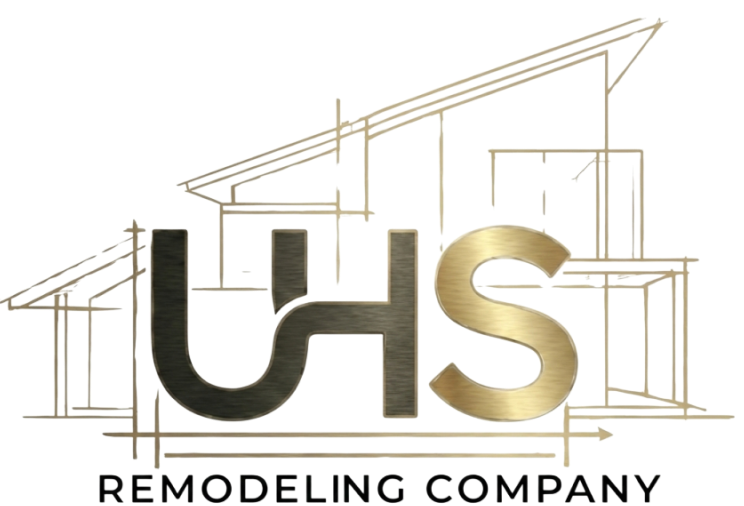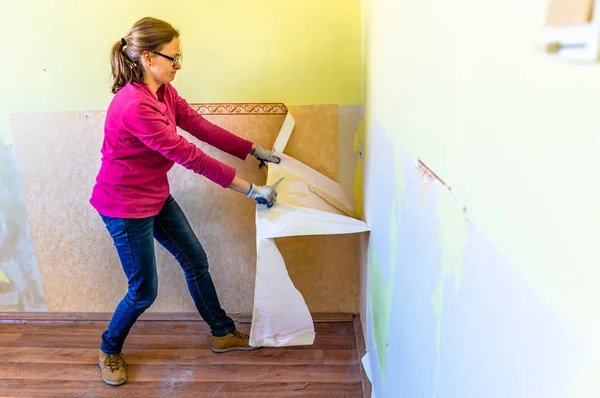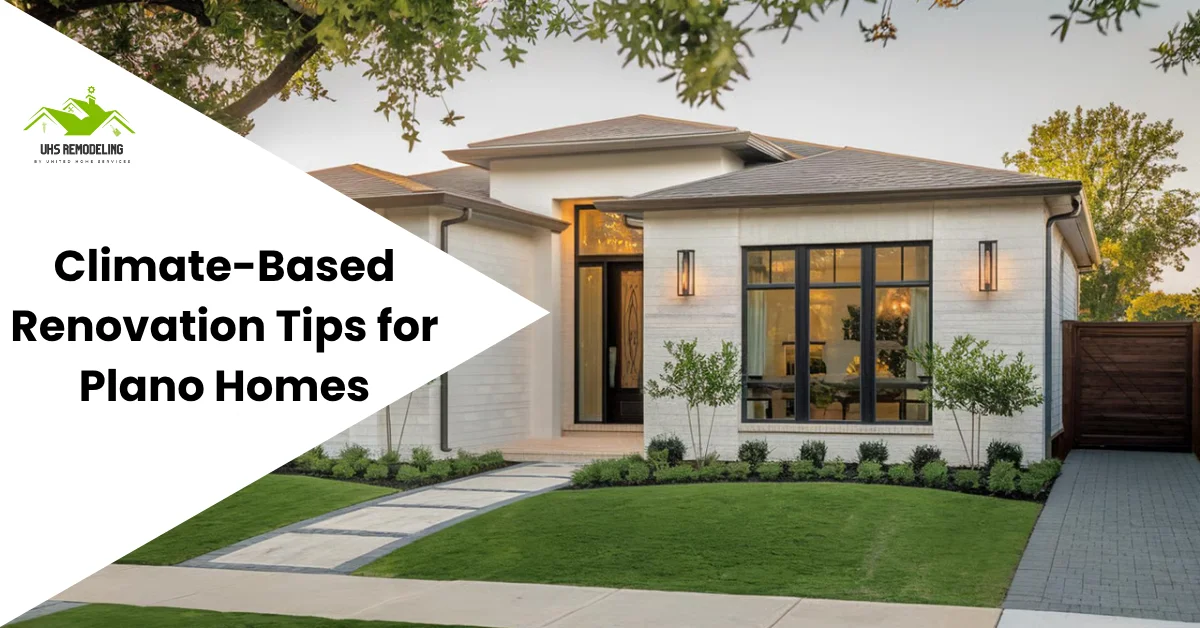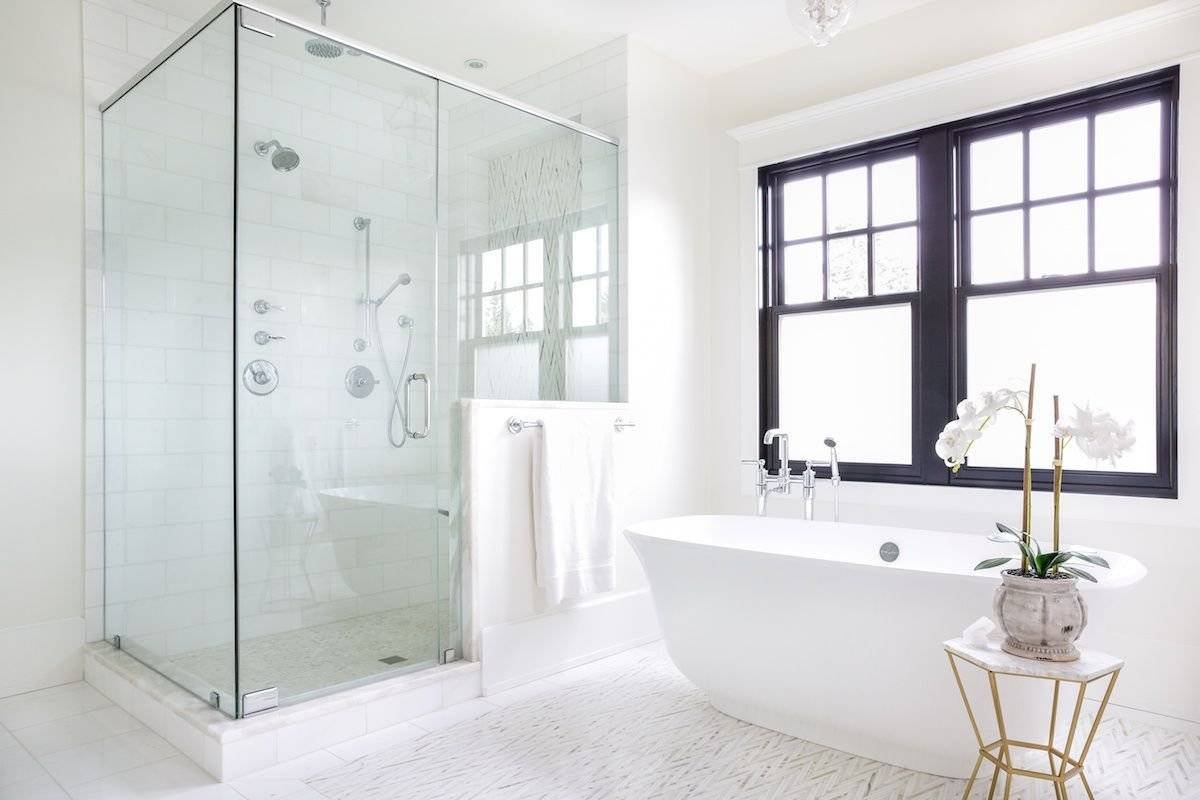When was the last time your house truly felt like home? If you’ve started feeling that your space no longer serves your lifestyle, it might be time to consider home remodeling in Frisco. According to a recent Houzz survey, over 55% of homeowners remodeled because their homes simply felt outdated. A well-planned renovation boosts property value, improves energy efficiency, and enhances daily comfort.
In this guide, we’ll explore 11 clear signs of renovation urgency. By the end of this article, you will hopefully be helped to make informed decisions. Also, you’ll learn how to act strategically, which involves choosing the right remodeling contractors, estimating your renovation timeline, and selecting durable building materials that match your vision and budget.
Prepare to spot the red flags and know precisely what to do next.
Why Recognizing Remodeling Signs Matters?
Ignoring early home remodeling signals can lead to costly consequences. Things start as a small crack or minor leak and can quickly evolve into structural issues or major system failures; deferred repairs strain your wallet and lower your property value over time. You can turn a crisis into an opportunity by identifying the need for home renovation services in Plano earlier.
Preventative renovation helps maintain your home’s safety, comfort, and efficiency, making sure that minor issues don’t become major regrets later on.
11 Signs You Should Consider a Home Remodel
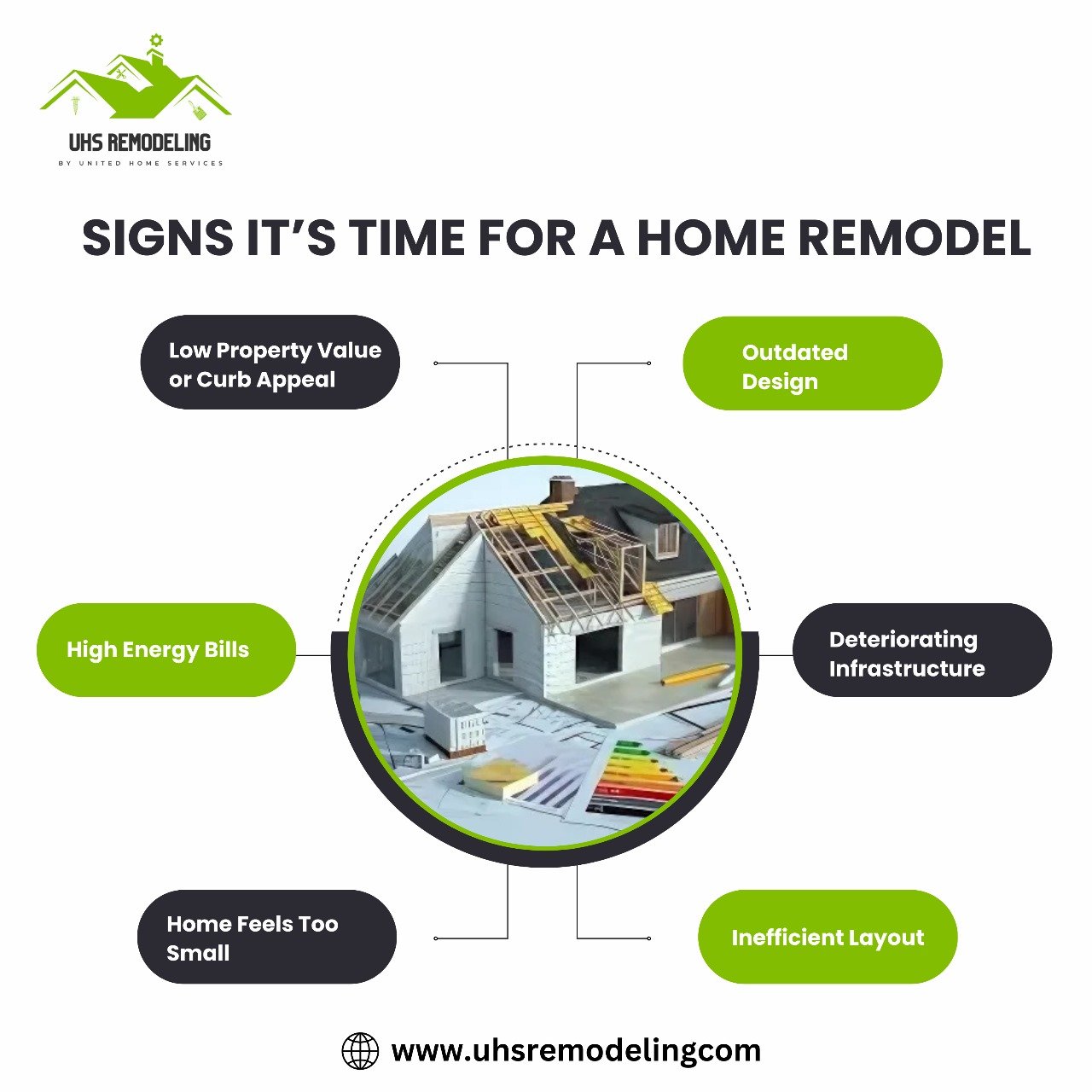
If your home no longer meets your needs or feels stuck in the past, you’re not alone; these renovation signs reflect subtle shifts and urgent concerns. Here’s what to look for before planning your home remodeling and renovation ideas journey:
1. Outdated Interior Design
Outdated decor like carpeted bathrooms, popcorn ceilings, or heavy drapes can make your home feel trapped in a past era. Design trends have evolved toward open floor plans, mid-century modern aesthetics, and clean, minimalist finishes.
If your space lacks these updates, it’s time for home modernization; you can try swapping out tired wallpapers, dated flooring, and old light fixtures to instantly revive your living space and bring it into the present.
2. Structural Damage or Wear
Cracks in the foundation, roof leaks, or faulty wiring are not just cosmetic concerns; they signal a potentially unsafe home structure over time. Neglecting these issues can lead to extensive damage and costly repairs. Spotting wall cracks or sagging floors means it’s time to act, and renovating early helps protect your investment and ensures your home stays safe and livable for your family.
3. Lack of Storage Space
Frustration builds quickly when your closets are overflowing and every cabinet is crammed. A lack of storage can turn even the prettiest home into a chaotic mess, so storage remodels using custom cabinetry or smart closet systems can make a difference. Even if you are trying to embrace minimalism or just need to declutter, space optimization makes daily living smoother and more enjoyable.
4. Inefficient Floor Plan
Does your kitchen feel cramped, or does your home’s layout feel inconvenient? A poor design can make even a spacious home feel small and inefficient. A remodel allows you to reconfigure spaces for better flow, improve natural lighting, and create a more open and welcoming environment. However, if it is not suiting your lifestyle anymore, you can start consulting contractors and builders to understand how long it takes to plan a successful whole house renovation.
5. High Utility Bills
If your utility bills are rising, your home may be leaking energy, and old HVAC systems, drafty windows, or poor insulation contribute to inefficiency. An energy audit can pinpoint the issues, such as upgrading to double-pane windows, better insulation, and green remodeling solutions, which improve home efficiency and cut long-term costs. Therefore, this type of energy-efficient remodeling pays off with lower bills and a more comfortable living space.
6. Family Expansion or Lifestyle Changes
Life changes fast – maybe you’re welcoming a new baby, hosting ageing parents, or need a home office. Suddenly, the space that once worked feels tight.
A home addition or room conversion, like creating a nursery or guest room, can adapt your house to your family lifestyle. Remodeling for growth ensures your home evolves with your life, offering flexibility and comfort for every stage.
7. Damaged Finishes and Fixtures
Years of use leave their mark—scuffed hardwood floors, peeling paint, and worn-out cabinets are hard to ignore. They are signs of material wear that drag down your home’s appearance and feel, so replacing outdated faucets, updating lighting, and refreshing surfaces with modern materials can bring back a polished look. A simple fixture replacement goes a long way toward restoring pride in your home.
8. Outdated Kitchens and Bathrooms
Kitchens remodel and bathrooms are among the most important spaces in a home, and they’re often the first areas to show signs of ageing. If your countertops, cabinets, or fixtures are outdated or no longer functional, it’s time to upgrade.
Remodeling these spaces can improve your daily experience and increase home value with renovation. The building renovation timeline for extensive renovations, including structural changes, could last over a year, especially if permits and inspections are involved.
9. Feeling Cramped or Cluttered
Your home can feel small and overstuffed as your family grows or hobbies expand. Don’t rush to move; instead, open concept living, attic conversions, or even a bump-out can provide the extra square footage you need. A smart remodel turns tight quarters into an airy, breathable space. Sometimes, feeling cramped is just a sign that it’s time to reimagine your home’s potential.
10. Lack of Personalization
Maybe you’ve purchased a home that doesn’t reflect your style at such a time; remodeling allows you to inject your personality into your living space by customizing features, finishes, and layouts that suit your taste and preferences.
Many homeowners want to change how their house looks if they have lived there for a long time. If you are looking for a way to make your home a more suitable fit for your personality and lifestyle, make sure that you keep the designs in mind and discuss them when you are ready for the changes.
11. Preparing To Sell the Home
If you’re preparing to put your house on the market, a remodel can help it stand out in a competitive market. Buyers are drawn to move-in-ready homes with modern amenities and updated designs. You can explore renovation vs remodel: which is best for your home to decide the right strategy before listing.
Strategic updates can make your home more appealing and help you command a higher price. How long do renovations take? Factors such as the home’s size, the design’s complexity, and unforeseen issues can all extend the house renovation timeline. For instance, how long it takes to remodel a house will depend on whether it’s a cosmetic update or a more structural renovation.
Home Remodeling Decision Matrix by Sign
Not every sign demands immediate action, but understanding which ones do can help you plan more efficiently. Use the table below to assess the urgency, cost implication, and potential ROI for each sign.
Table: Remodeling Decision Matrix
Sign |
Urgency Level |
Estimated Cost Impact |
ROI Potential |
Recommended Action |
| Outdated Interior Design | Low |
$$ |
Moderate |
Cosmetic updates, consider later phase |
| Structural Damage or Wear | High |
$$$$ |
High |
Immediate attention, repair critical |
| Lack of Storage Space |
Moderate |
$$ |
Moderate |
Consider built-ins during remodel |
| Inefficient Floor Plan |
High |
$$$ |
High |
Full remodel or layout redesign |
| High Utility Bills |
Moderate |
$$ |
High |
Upgrade insulation, windows, HVAC |
| Family Expansion/Lifestyle Shift |
High |
$$$$ |
High |
Prioritize room additions or conversions |
| Damaged Finishes/Fixtures |
Low |
$ |
Low |
Address during general updates |
| Outdated Kitchens/Bathrooms |
High |
$$$ |
Very High |
Prioritize remodel, especially for resale |
| Home Feels Too Small | Moderate | $$$$ |
High |
Explore extensions or attic conversions |
| Lack of Personalization |
Low |
$$ |
Moderate |
Add custom finishes as final touches |
| Preparing to Sell |
High |
$$$ |
Very High |
Focus on curb appeal, kitchens, and bathrooms |
This matrix helps homeowners prioritize based on both financial impact and practical urgency. By aligning your remodel timeline with the most pressing signs, you can manage cost while maximizing value.
How to Prioritize Your Remodeling Needs?
When everything feels urgent, how do you choose where to start? An innovative approach is balancing the budget against urgency. Use a remodel checklist to define your must-haves versus nice-to-haves. Consider using ROI calculators to determine which updates offer the most long-term value, align your remodeling goals with available resources, and don’t skip contractor consultations; they’ll help you refine your priority planning for a smoother, smarter project rollout.
How Long Does It Take to Remodel a Whole Home?
If you’re tackling a single room or a whole-house overhaul, just knowing how long it will take helps you plan realistically. Factors like contractor schedules and permit delays can shift your expectations. Here’s what impacts your remodel planning timeline and how to manage delays without derailing your goals.
For detailed guidance, see Planning a Successful Whole House Renovation.
What Affects Remodelling Duration?
The length of a remodel hinges on several factors: project scope, required permits, and labour availability. A minor bathroom upgrade might take two weeks, while a complete kitchen overhaul could stretch to two months. Ask “How long does it take?” and prepare for surprises. I advise understanding each renovation stage; it will help you stay on schedule and adjust expectations accordingly.
Sample Timelines by Project Type (Table)
Here’s a breakdown of average timelines by remodel type:
Project Type |
Average Duration |
Notes |
| Bathroom Remodel |
2–4 weeks |
Includes plumbing |
| Kitchen Remodel |
4–8 weeks |
Includes cabinets, appliances |
| Whole-Home Remodel |
3–12 months |
Depends on scope and permits |
| Basement Finish |
4–6 weeks |
Weather-insensitive |
| Structural Additions |
3–6 months |
Permit heavy |
Use this table to align expectations and plan effectively.
Budget Planning and Cost Considerations
Your timeline and budget go hand in hand; delays can lead to extra labour costs, and underestimated materials can inflate your expenses fast. Start with detailed remodeling estimates and compare contractor quotes before committing.
Be realistic about your home improvement costs, and explore financing options if needed. Always leave room for unexpected expenses in your budget remodel plan. One more thing: comparing bids not only helps save money but ensures you’re getting the right quality and value for your investment.
How UHS Remodeling Helps You Navigate the Remodel?
At UHS Remodeling, we understand that every home is unique, as is every remodel. We specialize in creating tailored solutions that meet your needs, style, and budget. Whether you’re looking for a small update or a full-scale renovation, our team of experts will guide you through every step of the process. We work with a clear home remodel timeline to ensure your project stays on track and within budget.
Contact UHS Remodeling today to transform your home into your dream space! If you’re wondering how long a remodel takes for smaller projects like a bathroom remodel or bedroom, our teams of professionals will guide you about the timeline and the best suggestions regarding the latest designs and super-comfortable features for your new kitchen, bedroom, or bathroom.
FAQs About Home Remodel Planning
1. How do I know my home needs remodeling?
Many signs indicate your home needs remodeling, like wear and tear, rising energy bills, lack of storage, functional issues, inefficient, persistent plumbing or electrical issues, outdated design, and changes in lifestyle needs. Remodeling restores functionality and modern comfort.
2. How long does it typically take to remodel a home?
A full home remodel can take from 4 to 12 months, depending on size and complexity, but usually it takes more than 6 months. Smaller projects like a kitchen or bathroom remodel usually take a few weeks to a few months.
3. Which areas offer the best ROI for remodeling?
Areas that offer the best ROI for remodeling include kitchen and bathroom remodels, basement remodels, garage and entry door replacements, energy efficiency upgrades, and exterior upgrades like landscaping and siding.
4. How can I budget effectively for a home remodel?
To budget effectively for a home remodel, use remodeling calculators and work with reliable and experienced contractors. First, set a realistic budget based on your goals, and then include 10-20% over your estimated budget for contingencies.
5. Should I move out during the remodel?
The decision to stay in the house or move out to a different location during the remodel depends on project scope, dust/noise tolerance, and utility outages. For large projects, temporary relocation is advisable for your convenience and safety, while you can stay in home for minor remodels.
